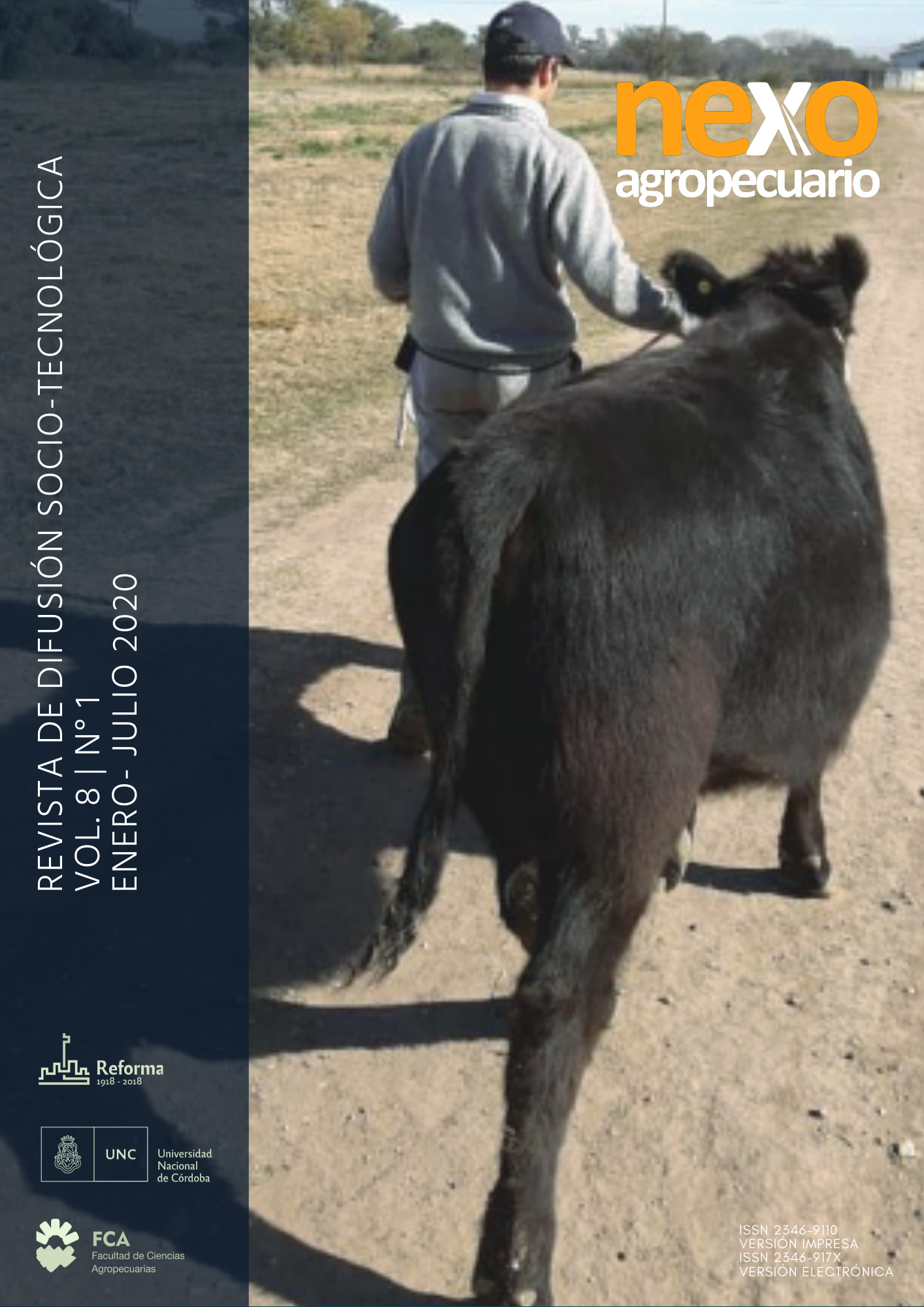beer sensory profile to assess quality and acceptance
Keywords:
Volatiles, descriptors, fermentation, flavorAbstract
Beer is an elixir made from four elements: water, malt, hops and yeast. Its process has been perfected over the years and can be considered one of the oldest drinks in the world. The resurgence of craft beer in recent years can garner a demand for excellence. Beer quality refers to style-related sensory parameters, such as bitterness, sweetness, sequence, malt character, hop intensity, and the like. On the other hand, it must be absent or regulated from “unwanted” aromas and flavors such as diacetyl (butter), acetaldehyde (green apple), phenols (clove) and oxidation (cardboard / rough / stale), among others. Since it is such a popular drink around the world, being familiar with the proper analytical techniques for beer evaluation is helpful to researchers and brewers. This article aims to summarize the various ingredients and processes of beer that cause the determining compounds of aroma, flavor, body, foam and other specific attributes when evaluating the quality of a beer. The gas chromatography (GC) and mass spectrometry (MSD) technique added to the solid phase microextraction (SPME) is the conventional technique for the detection and identification of volatile aromatic compounds. The same compounds can be perceived by sensory analysis, using a trained panel or a focus group. The Beer Core of the Food Technology Laboratory (LabTA) of the FCA-UNC, demonstrated through a study carried out in the year 2019, the use of SPME-GC-MSD is an effective method to detect volatiles from different families in blond beers and black from the city of Córdoba. The same study measured beer acceptance by a Focus Group using a 9-point hedonic scale and appreciation of beer descriptors optimized for consumer level.
Downloads
References
Briggs, D. (2004). Brewing Science and Practice. Woodhead Publishing Ltd.
Coghe, S., Martens, E., D'Hollander, H., Dirinck, P. J., & Delvaux, F. R. (2004). Sensoryand instrumental flavour analysis of wort brewed with dark specialty malts. Journalof the Institute of Brewing, 110(2), 94–103. https://doi.org/10.1002/j.2050-0416.
2004.tb00188.x.
da Silva, G.A., Augusto, F., Poppi, R.J. (2008).Exploratory analysis of the volatile profile of beers by HS-SPME-GC, Food Chem. 111, 1057-1063.
Fangel, J.U., Eiken, J., Sierksma, A., Schols, H.A., Willats, W.G.T., Harholt, J. (2018). Tracking polysaccharides through the brewing process, Carbohydr. Polym.196, 465-473.
Gigliarelli P. (2014). Noventa por ciento AGUA. Revista Mash.
Cigliarelli, P. (2017). Calidad..Todos Somos Responsables. Revista Mash.
Guerberoff, G.K., Marchessino, M., Olmedo, R.H., Grosso, N.R. (2019)a. Análisis de aceptación de cervezas negras de Córdoba por medio de grupo de enfoque y perfil de volátiles. Jornadas Integradas de la Facultad de Ciencias Agropecuarias.UNC.
Guerberoff, G.K., Lopez, P.L., Olmedo, R.H., Grosso, N.R. (2019) b. Compuestos aromáticos en cervezas rubias de la ciudad de Córdoba. Análisis químico y sensorial. Jornadas Integradas de la Facultad de Ciencias Agropecuarias. UNC.
Hailee, E., Anderson, I., Santos, C., Zacariah, L., Hildenbrand, K., Schug, A. (2019). A review of the analytical methods used for beer ingredient and finished product analysis and quality control. Analytica Chimica Acta 1085,1-20.
Hornsey, I.S. (2003). A History of Beer and Brewing.The Royal Science of Chemistry,
Cambridge.
Limure, T., and Sato, K. (2013). Beer proteomics analysis for beer quality control and malting barley breeding. Food Research International, 54(1), 1013–1020. https://doi.org/10.1016/j.foodres.2012.11.028.
Loviso, C.L., Libkind, D. (2018). Síntesis y regulación de compuestos del aroma y el sabor derivados de la levadura en la cerveza: ésteres. Revista Argentina de Microbiología, 50 (4), 436-446.
Nance, M.R. and Setzer, W.N. (2011). Volatile components of aroma hops (Humulus lupulus L.) commonly used in beer brewing Journal of Brewing and Distilling, 2 (2)16-22.
Ocvirk, M., Mlinarič, N. K., & Košir, I. J. (2018). Comparison of sensory and chemical evaluation of lager beer aroma by gas chromatography and gas chromatography/mass spectrometry. Journal of the Science of Food and Agriculture, 98 (10), 3627–3635.
Pasteur, L. (1879-Reimpresión 2005). Studies on Fermentations, The Disease of Beer, Their Causes, and the Means of Preventing Them. Londres: MacMillan and Co. And Reimpresión BeerBooks.com.
Shellhammer, T.H. (2014). Beer Fermentations. The Oxford Handbook of Food Fermentations.
Somos Cervereros. (2017). The Americam Homebrewers Association. www.bjcp.org (Beer Judge Certification Program)
Spósito, M.B., Ismael, R.V., de Alcântara Barbosa, C. M., Tagliaferro, A.L. (2019). A cultura do lúpulo. Série Produtor Rural - nº 68. Universidade de São Paulo.
Steele, M. (2013). ¿A que nos referimos con calidad de cerveza? The beer times.
Van Holle, A., Van Landschoot, A., Roldán‐Ruiz, I., Naudts, D., De Keukeleire, D. (2017). The brewing value of Amarillo hops (Humulus lupulus L.) grown in northwestern USA: A preliminary study of terroir significance. Journal of the Institute of Brewing. https://doi.org/10.1002/jib.
Wannenmacher, J., Gastl, M., Becker, T. (2018). Phenolic Substances in Beer: Structural Diversity, Reactive Potential and Relevance for Brewing Process and Beer Quality. Comprehensive Reviews in Food Science and Food Safety, 17: 953-988.
White, C., and Zainasheff, J. (2010). Yeast, the practical guide to beer fermentation.2010.
Downloads
Published
Issue
Section
License

This work is licensed under a Creative Commons Attribution-NonCommercial-ShareAlike 4.0 International License.
Aquellos autores/as que tengan publicaciones con esta revista, aceptan los términos siguientes:- Los autores/as conservarán sus derechos de autor y garantizarán a la revista el derecho de primera publicación de su obra, el cuál estará simultáneamente sujeto a la Licencia de reconocimiento de Creative Commons que permite a terceros compartir la obra siempre que se indique su autor y su primera publicación esta revista.
- Los autores/as podrán adoptar otros acuerdos de licencia no exclusiva de distribución de la versión de la obra publicada (p. ej.: depositarla en un archivo telemático institucional o publicarla en un volumen monográfico) siempre que se indique la publicación inicial en esta revista.
- Se permite y recomienda a los autores/as difundir su obra a través de Internet (p. ej.: en archivos telemáticos institucionales o en su página web) después del proceso de publicación del número de la revista, lo cual puede producir intercambios interesantes y aumentar las citas de la obra publicada. (Véase El efecto del acceso abierto).


